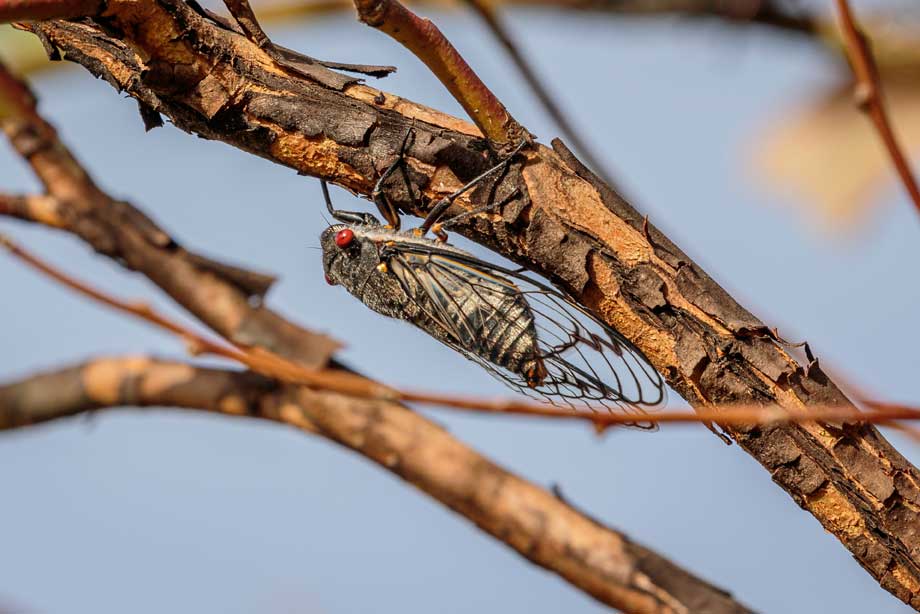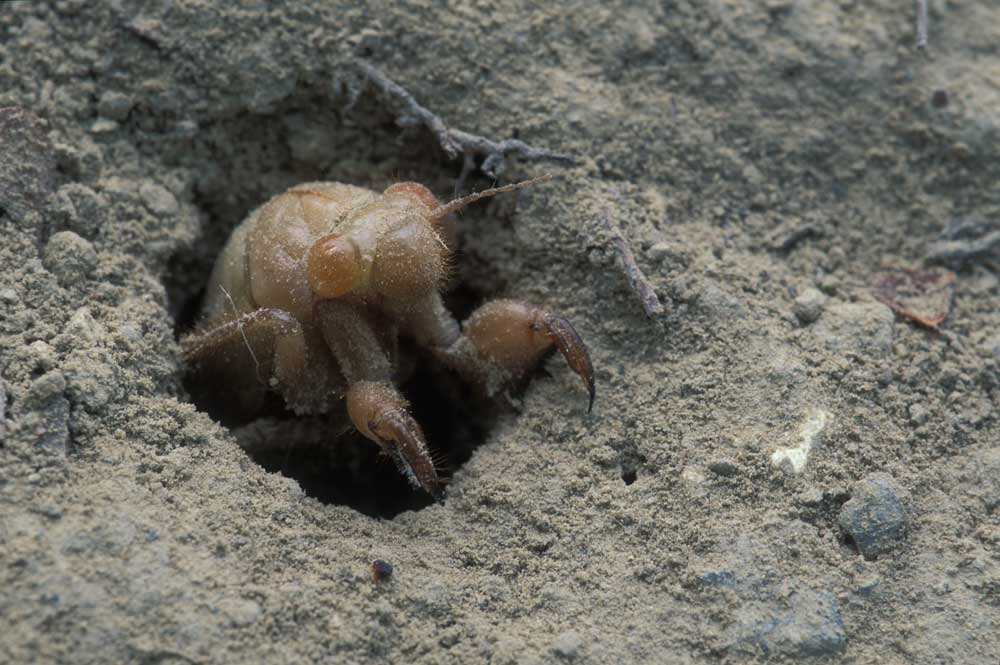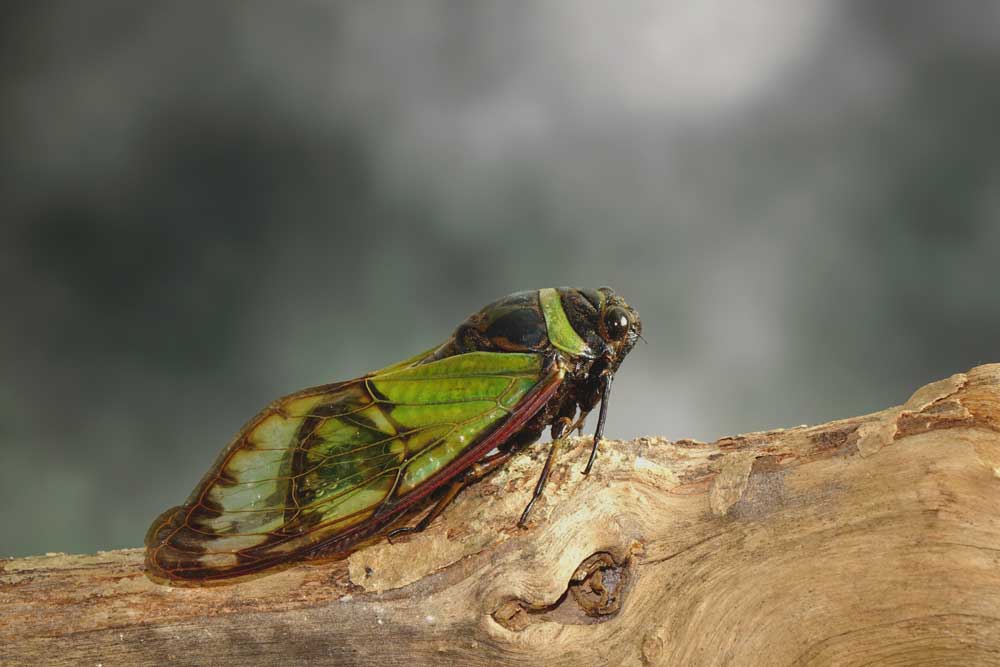What is a Cicada Exactly?
Last Spring, some of you in the northeastern region may have heard a louder than normal hummm or buzz in the air. Accompanying this sound, you may have noticed hundreds of “locust shells” attached to seemingly every surface that wasn’t smooth, plastic, or metal. The trees were covered from the bottom of the trunk to the tips of the leaves, everything from wooden fence posts to house siding, you name it… and it was loaded with crusty brown exoskeletons from what many folks mistakenly call a “locust”. As days passed and the number of insect encounters radically increased, you might have found yourself thinking… WOW… this almost seems like a plague similar to those described in biblical times. Eventually, the “song” of the Cicada seemed to dampen, sounds of birds chirping and the whisper of leaves blowing in the wind returned to the air. If you were fortunate enough to witness this rare occurrence, consider yourself lucky. This phenomenon only occurs in the eastern parts of North America and if you want to hear it again you’ll have to wait another thirteen years.
Cicadas are often referred to as locusts. This is wrong. Locusts are actually a type of leaf eating grasshopper. Both are obviously insects, but not very closely related…think bobcats and beavers, both mammals but very different in many ways. My ( as well as many others in the area) encounter was with the thirteen year periodical cicada, not to be confused with the annual cicada which typically appears in mid to late summer. As you have probably already gathered these creatures only make an appearance every thirteen years, or, periodically. Over the course of their lives, cicadas undergo several changes. They begin as very tiny creatures hatched from eggs deposited in leaves, twigs, and bark by the females. Once hatched, these ant sized juvenile cicadas work their way down to the ground and in to the soil. Juvenile cicadas burry themselves anywhere from 2 inches to 2 feet underground and feed on tree roots. Once they have settled in, they will not see the light of day for a very long time.
Fast forward thirteen years. Its spring, the flowers are beginning to bloom, the trees are starting to bud, and the wild turkeys have…well, you know what turkeys do in the spring. The cicadas have undergone multiple transformations while living beneath our feet and are ready to return from their long dark life underground.
Types of Cicadas
WATCH NEXT: Best Baits for Small River Smallmouth Bass Fishing

Before we talk about the life cycle of the cicada, it is important to note there are around 3,000 cicada species around the world. Even though there are wide varieties of cicadas, they can be broken into three types:
1. The Annual: This cicada species has an annual life cycle and shows up every year.
2. The Photoperiodical: A cicada species that can show up every year, but every so often, they come out in large numbers.
3. Periodical: This is the cicada species that make the news when they show up. They show up every 13 or 17 years by the millions.
Many people think that cicadas show up every 17 years — others argue they hear them yearly. In this case, both are right. It’s just that they are talking about two different species of cicada.
The Egg Stage
There are three stages to the life cycle of the cicada. They are the egg, nymph and adult stages. The egg comes about when the female cuts a slit in the bark of a branch or twig and lays its eggs. The female makes the slit with a sharp tube-like organ called an ovipositor. The slit also seeps sap that hatching nymphs will eat until the nymph falls to the ground. Each slice or nest will be home to 20 to 30 eggs. A single female cicada can lay up to 500 eggs. You may have noticed their eggs at the end of a small branch. The eggs themselves look like a small grain of rice.
In some cases, the end of the branch that was home to cicada eggs will die, leaving behind a limb with dead leaves at the end of the branch. The group of dead leaves is visible from the ground and resembles small brown flags in the trees — thus, the term flagging. The flags or groups of brown leaves do not indicate meaningful damage to the tree, so there is no concern for large groups of cicadas wiping out trees.
The Nymph Stage
After an egg has been in the slit/nest for six to 10 weeks, a nymph will hatch. Soon, the lightweight nymph falls unharmed to the ground. It will then begin digging its way into the dirt of the surrounding vegetation. Since grass and other vegetation have shallow root systems, the nymph will feed there first. Eventually, the nymph grows stronger and works its way to the root system of nearby trees.
There are five development stages of a nymph that biologists call instars. The now underground nymph will feed on Xylem, otherwise known as sap, from the tree’s root system. There is still no concern for damage to the root system, as the saliva of the nymph seals the feeding hole in the root before moving to the next root — Mother Nature’s way of putting the cork back in the bottle.
The Annual and Photoperiodical Cicada Nymph
The annual and photoperiodical cicada nymphs stay underground for two years. Their emergence is not synchronized, so cicadas of this type will emerge every year. Every so often, an above-average number of photoperiodical cicadas will emerge in a short amount of time. Factors like rainfall and the number of other cicada species in the area can affect this. Although the number of photoperiodic cicadas that can emerge at one time is impressive, it is not the massive numbers we see during a periodical cicada emergence.

The Periodical Cicada Nymph
As a nymph, the periodical cicada will stay underground for years. In fact, some species will be underground for 13 years, and yet others will stay for 17 years. Occasionally, there will be what biologists call “stragglers” that may stay close to 21 years. When it is time, the nymph will tunnel out and begin its journey to adulthood. How the nymphs know it’s been 17 years, no one knows.
Biologists group periodical cicadas into groups or what they call “broods.” This may be the 17th year for one brood but only year 15 for another. Biologists track these and can then predict when a given brood will emerge. There are 12 broods of 17-year cicadas and three broods of 13-year cicadas. They name the broods with a Roman numeral. For instance, brood X (10) is the largest of all broods.
When nymphs decide to leave their underground home, they tunnel to the surface. Some species just come out of the hole and onto the first vertical thing they can find, and others build a mud chimney or turret and climb out of that. Biologists believe they do this to keep their hole from filling full of water. Once on the side of a plant or tree, the cicada nymphs will shed their exoskeleton and crawl out a winged adult. Once free, the wings of the now adult cicada will fill full of a fluid called hemolymph. Now the fully winged adult is ready for mating season.

The Adult Cicada
Once the ground temperature reaches sixty four degrees cicadas will begin to emerge from the soil. This day has been long awaited. This day they will surface, soon after the cicadas will find a spot to “molt” or shed their exoskeleton, spread their wings, fly around, sing their song, mate, lay their eggs, and eventually die, returning to the ground like countless generations before them. This whole process lasts about three to four weeks.
The male cicada sings or makes what is essentially a mating call. This is the sound you hear every summer coming from the trees. It uses its music to attract a female cicada. The male of each species has its own song and only females from the same species will answer. This is why several species of cicada can coexist in the same tree.
The female cicada is not as musical as its male counterpart but instead answers the male with a clicking sound. The female click is much like that of someone snapping their fingers. Soon after breeding, females deposit eggs into leaves, twigs, and bark of specific trees (mainly oak and fruit species) using a knife like appendage called an ovipositor. Six to seven weeks later, the eggs hatch and juvenile or “nymphs”, make their way back to the ground and the long wait begins for this new generation. Once the eggs are in place, the life cycle of the cicada is complete.
How Does the Cicada Affect the Ecosystem?
So… what does this have to do with being a Gamekeeper? Or hunting for that matter? To answer this, lets step back and look at this from a more simplistic point of view. What happened in the grand scheme of things? Seemingly out of nowhere, appears a very high population of protein packed, very nutritious insects that all critters can easily catch and eat. I distinctly remember hearing many stories about turkeys being harvested and hunters finding nearly every bird to be full of these large insects. This easily locatable and consumable food source helps to eliminate pressure from animals normally feeding on berries, fruits, and flowers; allowing more food for deer and other non insect eaters (insectivores). And think about the fish! How many largemouth bass were caught using these real live “buzz baits”. How many weren’t caught because the fish had already had their fill? You can bet all insect eating fish had way more food than they could ever eat for this short period of time.
So sure, the wildlife benefited from this “once in a lifetime chance” to effortlessly dine on an endless buffet of nutrient rich bugs but what about the trees? How did the trees make out during all of this commotion? Weren’t trees the host to this, what seems to be parasite? After all, these things do feed from tree roots and lay eggs in their exterior. The simple answer is NO, no real harm done. Research indicates that root damage from feeding juvenile cicadas is miniscule, and that the only real significant damage that occurs is usually found among very young sapling trees. Eggs deposited by females can kill small twigs. If you’re a seedling and your branches are small twigs, then, you might be in trouble. This can be prevented by simply placing netting over small trees until the short cicada season is over.
So now we know that cicadas aren’t all that bad for trees, but does this mean they can actually be beneficial to trees? The answer is yes! The millions of cicadas not consumed by wildlife end up back on the forest floor where they begin to decay, this gives the top soil a much appreciated dose of completely organic fertilizer. Also, the holes (similar to that of crawfish) created by emerging cicadas offer a direct flow of water to the trees root system. This allows a much more effective level of saturation which will surely come in handy during hot droughty summer months.






























